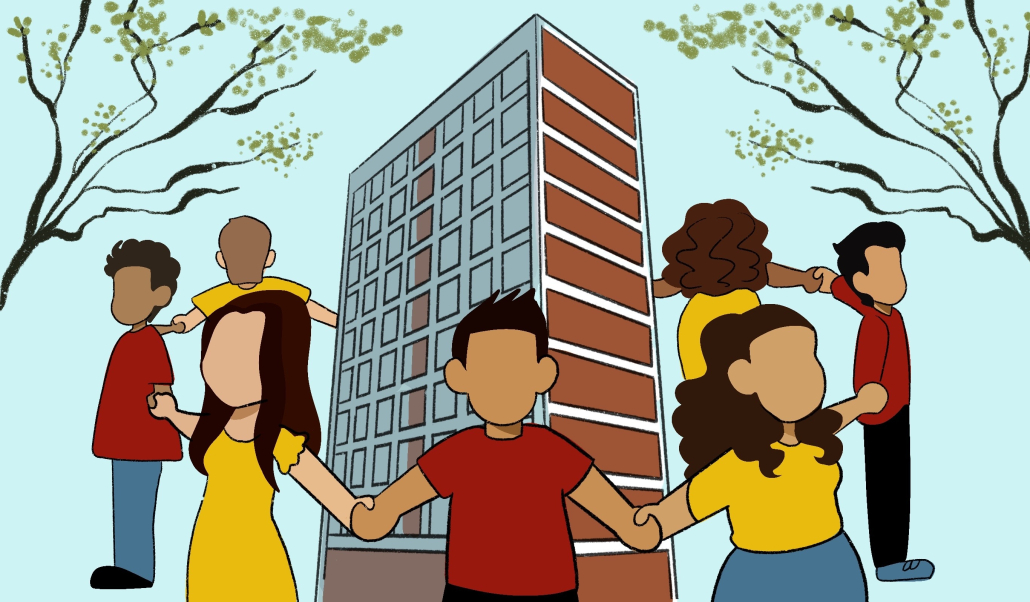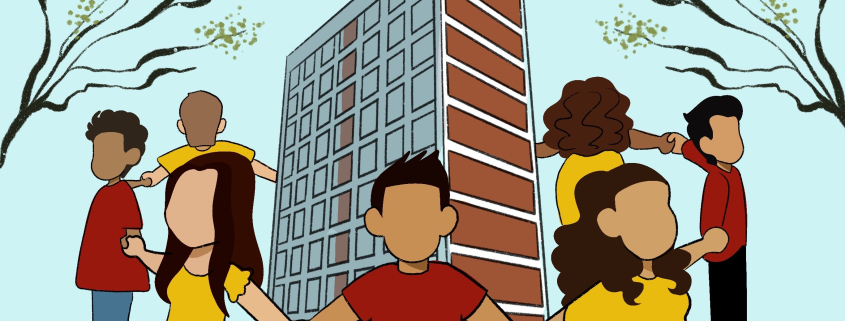Pan y Café: Rest in peace, Fluor Tower

As silly as it sounds, if there’s one last thing I could do before I graduate, it would be to visit Fluor Tower’s sixth floor one more time.
It was home to El Sol y La Luna, USC’s special interest Latinx community floor— where I lived my freshman year. But now, everytime I pass by the building, which will be completely demolished shortly after commencement in May, my heart breaks.
I unsurface at least one memory everytime I look at it, from taking care of drunk people in my suite’s small living room to my first surprise birthday party. Since the internal demolition has already begun, all that remains now of the home that hosted these memories are structural beams and walls.
The building’s emptiness feels uncanny. When I look at it, it feels like someone has scooped my heart out. I want to tell passersbys who are confused about the construction that inside this empty building is where I learned who I was and who I could be.
Fluor was my home, and I don’t say this for sentimentality’s sake, but because as a first-generation college student who fretted about the transition to college, El Sol y La Luna provided me with the comfort I needed.
I sang along to “Mi Burrito Sabanero” with my suitemates during the holiday season. I had late-night discussions about the pressures that came with attending university and all that my parents had sacrificed to get me to USC. I shared bits of my grief, and I found that each time I opened up, there was a receiving hand on the opposite end who understood the nuances of my experiences.
While I know the community has relocated to another residential building, there is a piece of me that sees Fluor Tower as an extension of 17-going-on-18-year-old Angie who cared desperately for a place where all parts of her were validated.
When I’ve heard white women project womanhood as a monolith of experiences, I wince. Personally, I don’t want to be equated with that. Given my brown skin, native language, immigration experience, my culture, my heritage and the way my mom raised me, I am deeply uncomfortable with comparing my experience as a woman under violent systems of oppression with that of a white woman.
At the end of the day, my suite and I understood each other. We knew what it meant to be Latinas, and how that would manifest itself under a society that hypersexualizes and stereotypes us as “feisty” and “strong.” We could share our experiences with machismo, our love for our cultures and our appreciation for one another.
Unfortunately, Fluor Tower also symbolized the larger meaning of what it means to be non-white at a predominantely white university. When the building flooded in October 2019 due to a fire sprinkler set off on the sixth floor, racist rhetoric spread on social media with messages such as ,“You can’t make tamales at 3 a.m. and then forget to turn off the microwave.”
The University did little to support those students facing discrimination, especially when such racist language targeted a safe space that students viewed as a home on campus. Even then, the only people who shared outrage at the racism were people of color. There was no white allyship or greater message sent on behalf of University administration about it.
When I set off to write this column, I wanted to reach the Latinx community but also anyone who had ever felt as if their identities were underrepresented at USC. Taking up space in the Daily Trojan and writing about my experiences felt liberating and reassuring, especially after four years of bottling my emotions to only a shared group of people.
Before, the only space I knew to take was in the community I had built at Fluor, but now I realize that my voice needs to be amplified, if only to make someone out there — whoever you are — feel less alone. If I have done that, then I have accomplished one of the guiding principles of my journalistic integrity.
I’ve spent much of my USC experience identifying objects with milestones.
The Annenberg School for Communication and Journalism represented the beginning and death of my imposter syndrome — remember, sometimes you’ll find out that the people who the institutions have been historically designed to benefit will just turn out to be incredibly uninspiring.
Seeley G. Mudd building’s rooftop symbolized how cool you were if you snuck up there, but also when you looked out, how beautiful Los Angeles was. The Daily Trojan newsroom is where my news judgment as a journalist was sharpened and where I learned about the potential of a newspaper’s platform. The Dr. Joseph Medicine Crow Center for International Affairs was where I saw the Guatemalan flag during summer orientation and where my parents took a photo of me before publishing it on Facebook.
And Fluor Tower is about freshman Angie who had no idea what the next couple of years had in store for her. All she really knew is that her parents had worked too hard for her to do badly in college, that she’d go with her friends to the McCarthy Dining Hall if the ravioli bar was on the menu and that she was unsure how someone like her could ever make a mark at USC.
I want to tell her that I’m proud of her. And congratulations, we did it.
Angie Orellana Hernandez is a senior writing about contemporary Latinx experiences in conjunction with higher education. Her column, “Pan y Café,” ran every other Friday. She is also the Development and Recruitment Director at the Daily Trojan.

